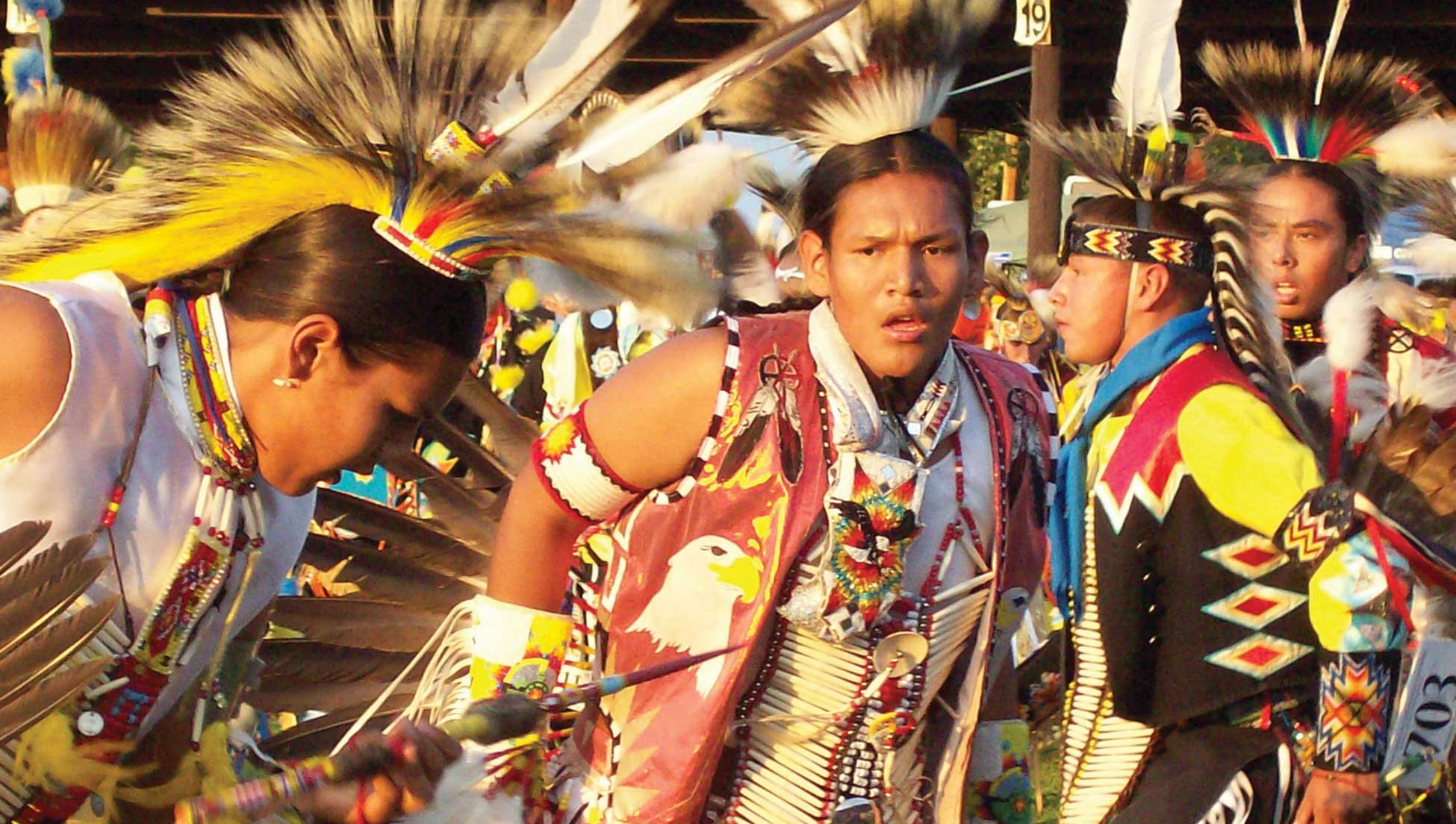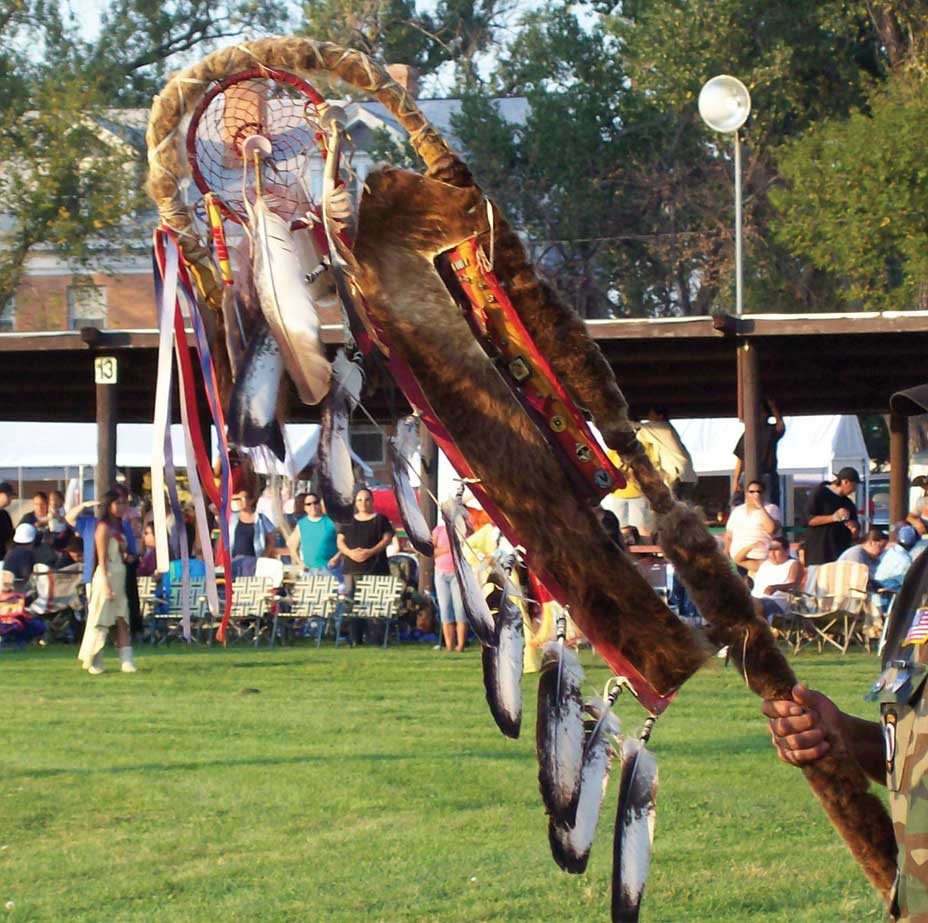The Plains Indian tribes had societies (clubs) for different purposes. There were societies for warriors, for leaders of the tribe, for medicine men or women, and for others. The Lakota people had a council of older men called “ The Chiefs’ Society,” that made important decisions for the tribe. The Mandan and Hidatsa tribes had a “White Buffalo Society” for women only. Dancing to lure bison was a main focus of this society.
The basic values that the Plains Indian people lived by hundreds of years ago are still being taught today. One very important way of sharing and keeping cultural values and beliefs is through a special event called a powwow.
A powwow• Gathering of dancing, singing, and getting together with friends
• Oldest public festival in North America
• The drum is the basic instrument
• Whole setting of a powwow is in a circle is an American Indian gathering of dancing, singing, and getting together with friends. Powwows are open to the public and are a good way for non-Indians to learn something about Indian culture.
The powwow is the oldest public festival in North America. Many of the songs sung at powwows are traditional songs that have been handed down through the generations. The drum, a symbol of the heartbeat of the universe, is the basic instrument.

Figure 72. The powwow is the oldest public festival in North America. (Gwyn Herman)

Figure 73. The Eagle Staff is the traditional flag of American Indians. At powwow festivals, it is at the head of the parade to symbolize the First Nation. (Gwyn Herman)
To celebrate the circle of life, the entire setting of a powwow is a circle. The dance area is a large circular space in the center of an arena. The drums and singers form a circle around the dancing area. Spectators (people watching) are seated in a circle around the singers. Booths of the vendors form a circle around the whole arena. VendorsPerson who offers items for sale are the people who offer Indian arts, crafts, jewelry, and other items for sale to the public. Food vendors are also in this circle and sell many different kinds of American Indian foods.
Each session of a powwow begins with the Grand Entry. This is the parade of dancers, all dressed in their regalia. The spectators remove their hats and stand at respect for the Grand Entry. The Eagle Staff,• Traditional American Indian flag
• Symbol of the First Nation
• Contains sacred eagle feathers which is the traditional flag of American Indians, is at the head of the parade to symbolize the First Nation. It is followed by the U.S., Canadian, and tribal flags. After a flag ceremony and a blessing ceremony, the dancing contests begin.
The dancing is divided into different categories. Men, women, and children compete separately. Each group has several different kinds of dances. Each person dresses in regalia to fit the dance. For example, the “Jingle Dress Dance” features women wearing dresses which are covered with hundreds of metal cones that jingle as they dance. Indians from many different tribes compete in the contests, and prizes are awarded to the winners in each category.
Indian tribes of North Dakota hold several powwows each summer. The United Tribes International Powwow, held at United Tribes Technical College in Bismarck, North Dakota, holds the “Miss Indian Nations Pageant” every year. The main job of the person chosen as Miss Indian Nations is to represent all Indian Nations in support of education and other important values.
Powwows are important events in the lives of American Indians because they bring relatives and friends together for fun and entertainment. They are also excellent opportunities for the Indians to show their pride and share their culture.


